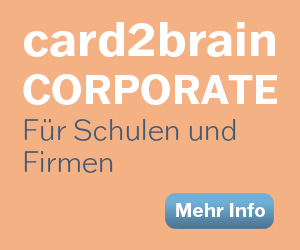b2b mkt
btob
btob
Kartei Details
| Karten | 78 |
|---|---|
| Sprache | Deutsch |
| Kategorie | Übrige |
| Stufe | Andere |
| Erstellt / Aktualisiert | 29.03.2014 / 30.03.2014 |
| Weblink |
https://card2brain.ch/cards/b2b_mkt
|
| Einbinden |
<iframe src="https://card2brain.ch/box/b2b_mkt/embed" width="780" height="150" scrolling="no" frameborder="0"></iframe>
|
Definition: B2B Marketing - What is the Definition for B2B Marketing?
Business Marketing is the practice of individuals, or organizations, including commercial businesses, governments and institutions, facilitating the sale of their products or services to other companies or organizations that in turn resell them, use them
• Business-to-business (B2B) market is significantly larger than the consumer market.
• Business-to-business (B2B) marketing Organizational sales and purchases of goods and services to support production of other products, to facilitate daily company operations, or for resale.
Definition: B2B - What is the definiton for Business-to-business?
Business-to-business (B2B) describes commerce transactions between businesses, such as between a manufacturer and a wholesaler, or between a wholesaler and a retailer. Contrasting terms are business-to-consumer (B2C) and business-to-government (B2G). B2B branding is a term used in marketing.
The overall volume of B2B (Business-to-Business) transactions is much higher than the volume of B2C transactions.The primary reason for this is that in a typical supply chain there will be many B2B transactions involving sub components or raw materials, and only one B2C transaction, specifically sale of the finished product to the end customer. For example, an automobile manufacturer makes several B2B transactions such as buying tires, glass for windscreens, and rubber hoses for its vehicles. The final transaction, a finished vehicle sold to the consumer, is a single (B2C) transaction.
B2B is also used in the context of communication and collaboration. Many businesses are now using social media to connect with their consumers (B2C); however, they are now using similar tools within the business so employees can connect with one another. When communication is taking place amongst employees, this can be referred to as "B2B" communication.
Definition: B2B Commerce - What is the definition for B2B Commerce?
Before Internet:
- B2B transactions called trade or procurement process
Total inter-firm trade:
- Total flow of value among firms
B2B commerce:
- All types of computer-enabled inter-firm trade
B2B e-commerce:
- The portion of B2B commerce enabled by the Internet
What are differences between B2B and B2C?
The main difference between B2B and B2C is who is the buyer of a product or service. The purchasing process is different in both cases and the following is a list of key differences between them.
B2B: Marketers can use industry jargon
B2C: the voice must be at least relatable to the majority of consumers, simpler language.
B2B: purchase process tends to be rationally and logically driven
B2C: typically emotionally triggered
B2B: audience is seeking efficiency and expertise
B2C: consumer audience is more likely to be seeking deals and entertainment
B2B: detailed content is required for marketing
B2C: to meet the basic needs of being useful
B2B: wants information and the ability to build a close relationship with brands
B2C: isn’t necessarily looking to build a close relationship with it
B2B: much longer chain of command to deal with since superiors often need to approve purchases
B2C: individual typically makes their own speedy B2C purchase choices
B2B: decisions are meant to complete long-term goals, buying cycle is often much longer.
B2C: B2C buys tend to satisfy immediate needs
Industrial vs consumer marketing (B2B and B2C differences) 255
1. Market
- B2B: Geographically Concentrated and Relatively Fewer Buyer
- B2C: Geographically Disbursed and Mass Market
2. Product
- B2B: Technical Complex and Customized
- B2C: Standardized
3. Price
- B2B: Competitive Bidding and Negotiated Prices, List Price for Standard Products
- B2C: List Price or MRP (Maximum Retail Price)
4. Promotional
- B2B: Emphasis on Personal Selling,
- B2C: Emphasis on Mass Media (Advertising)
5. Service
- B2B: Service , timely Availability extremely Important
- B2C: Somewhat Important
6. Channel
- B2B: More Direct, Fewer Intermediaries
- B2C: Indirect, Multiple layer of Intermediaries
7. Buying Behavior
- B2B: Involvement of Various functional area from both the ends, Purchase Decisions are performance based and rational, Technical Expertise, Stable Interpersonal relationship
- B2C: Involvement of family members, Purchase decisions are mostly based on Physiological/social/psychological needs, Relatively less technical expertise is required, Non- Personal relationship
What are the buying behaviour in a B2B environment?
Some characteristics of organizational buying / selling behaviour in detail:
- For consumer brands the buyer is an individual. In B2B there are usually committees of people in an organization and each of the members may have different attitudes towards any brand. In addition, each party involved may have different reasons for buying or not buying a particular brand.
- Since there are more people involved in the decision making process and technical details may have to be discussed in length, the decision-making process for B2B products is usually much longer than in B2C.
- Companies seek long-term relationships as any experiment with a different brand will have impacts on the entire business. Brand loyalty is therefore much higher than in consumer goods markets.
- While consumer goods usually cost little in comparison to B2B goods, the selling process involves high costs. Not only is it required to meet the buyer numerous times, but the buyer may ask for prototypes, samples and mock ups. Such detailed assessment serves the purpose of eliminating the risk of buying the wrong product or service.
Why B2B brands need to be differentiated?
One of the characteristics of a B2B product is that in many cases it is bought by a committee of buyers. It is important to understand what a brand means to these buyers. (Note: Temporal) Buyers are usually well-versed with costing levels and specifications. Also, due to constant monitoring of the market, these buyers would have excellent knowledge of the products too. In many cases the purchases are specification driven. As a result of this, it is vital that brands are clearly defined and target the appropriate segment.
As explained above, every one product can only be associated with one brand. Because of this, it is vital that companies find a white space for their brand, an uncontested category to occupy space in the minds of the buyer.
In differentiating one’s brand, companies can use various strategies, often referring to the origin of the goods or the processes used to manufacture the product(s). Some have identified up to 13 such strategies. Depending on the company’s history, the competitive landscape, occupied spaces and white spaces, there could be one or many strategies that any one company could use.
Ultimately, a strong B2B brand will reduce the perceived risk for the buyer and help sell the brand.
What is Content?
Content = Something Expressed
- Article
- News
- Video
- Game
- Web site
- Micro Site
- Digital Magazine
- Blog & micro-blog
- Forum
- Comment
- eNewsletters
- eBooks
- Webinars
- Case Studies
- Surveys
- App
Definition: What is Content Marketing?
Content marketing is a marketing technique of creating and distributing relevant and valuable content to attract, acquire, and engage a clearly defined and understoo d target audience – with the objective of driving profitable customer action.
What is NOT Content Marketing?
- Selling
- Advertising
- Interrupting marketing (Telemarketing, direct mail, Spam ads tv, radio)
- Media buying (Tv, radio, newspaper)
Content marketing is PULL a rather than a PUSH strategy
Why Content Marketing?
Because Content Marketing will...
- Generate Targeted Traffic
- Increase Audience & Reach
- Engage Audience
- Increase on-the-spot Conversion
- Build Connections & Relations
- Help Prospects understand You
- Provide Thought Leadership
Build trust and increase WOM
Where to publish? What are online “Content" distribution channels
- Website
- Emails and Newsletters
- Social Media
- RSS (Really Simple Syndication) --> Web syndication
- Podcasts
- SEM Searchengine Marketing
- Digital Press
- Online Events
Definition: Engagement - What is Engagement?
A marketing strategy that directly engages consumers and invites and encourages them to participate in the evolution of a brand.
What are Content Marketing Challenges?
- Who is my buyer -> Research
- I do not have enough content & content creator -> Outsource
- There is a lot of channels, which should I use -> Your Buyer
What is the Content Marketing Process? You can call it “phases”, I don’t mind!
- Research and Plan
- Create
- Opitmize
- Promote and Distriubute
- Measure
How to Plan for your Content Marketing? Call this “Content Marketing Strategy”, I don’t mind either!
- Set your Goals
- Know your target audience, Preferences, triggers and behavior.
- Know where they hang out online - favorite platform - Facebook, Twitter, YouTube….
- Decide on content tactics: articles, videos, micro-site, podcast…
- Create Exciting Content
- Distribute each piece of content to its relevant platform
- Engage consumers in order to have them interact with the content
- Decide how you will measure the effectiveness - KPIs
Finally…You gotta learn about your… Which KPIs do you know?
Relation & Trust
- Page Rank
- Inbound Links
- # Fans
- # Followers
- # Comments
- # Shares
- # Mentions
- Page Views
Customer Insights
- Email open Rate
- Downloads
- Feedback Forms
- Inquiries
- Comments
- Effective Channels
Where does the money come from?
Your Prospects!
Leads & Sales
- # Inquiries about Product / Service
- # Product Catalogue downloads
- # Qualified Leads from specific content
- Closed deals from your online channels
Compare KPIs to what then? What to benchmark to?
- Online Paid Advertising
- Competitors’ handy figures
- Last year’s figures
It’s time for a pieces of wisdom… Last important things:
The most important! “Traditional marketing talks at people. Content marketing talks with them.” – Doug Kessler
the famous one, By Bill Gates…
“Content” is KING.
B2B - Finance - Which Types of Business or Business Organizations?
Private -> B2B ->
Corporation
- Separate legal person, i.e. can own property, sue or be sued, and contract in own name.
- Limited liability (In the case of a company limited by shares, the level of liability is the amount remaining unpaid on the nominal value of the shares held. In the case of a company limited by guarantee, it is the amount that shareholders have agreed to pay in the event of the company being wound up)
- Shares are transferable.
Sole Trader / Sole Practitioner Ship
- The owner ‘is’ the business – owns the assets and is liable for all the debts.
- No legal formalities are required to set up a sole trader business.
- This form is inappropriate for large businesses or those involving a degree of risk.
Limited Liability Partnership (LLP)
- An artificial legal entity with perpetual succession. It can hold property in its own right, enter into contracts in its own name, create floating charges, sue and be sued.
- The liability of the members of an LLP is limited to the amount of capital they have agreed to contribute.
Purpose of a Business – What is the Goal of a Business?
- Maximizing shareholders’ wealth
- Satisfying stakeholders
How do we meet the goals of a business?
Put the Vision into Action!
Vision -> Strategy -> 2-3 Year Plan -> Budget and Actions
What do we do when we deal with other businesses?
Financing our Business? What types of financing?
Short Term Finance:
- Overdrafts
- Short term loans
- Trade credit
- Lease Finance
Long term Finance
- Debt finance
- Leasing
- Venture Capital
- Equity finance
How do we measure performance of an initiative after implementation?
Have we met the KPIs set?
- Market share / growth / sales etc....
- Savings / value chain improvement
- Deployment / Customer satisfaction
Have we met/exceeded/stayed behind the pre-set financial targets?
- budget
- forecast
- chosen scenario of the business case
How do we measure financial performance of the business?
Financial statements
- Balance Sheet
- Income Statements
- Cash Flow Statements
- Changes in Owners
Management reports
- Sales
- Gross margin,
- Operating profit by category/business line/ segment/ channel/distributor
- Accounts receivable aging by sales region/by customer
- Cost of production by SKU / by production line etc..
Ratio Analyses
- Many ratios use figures at a particular point in time and thus may not be representative of the position throughout a period. For example, seasonal trade or large one-off items may make year-end figures uncharacteristic.
- Ratios are of little use in isolation. Comparisons could be made to:
- last year’s figures to identify trends
- competitors’ results and/or industry averages to assess performance.
- Care must be taken to understand if the figures behind are consistent and if any window dressing made?
What are Typical Functions in a B2B Company? Why is Finance in the Middle?
- Sales
- Marketing
- Logistics
- Production
- HR
- IT
What Does Finance Do?
• Financial Analysis
• Treasury
• Budgeting & Forecasting & Actual vs Budget Tracking
• Business Partnering
• Credit/Collection Management
• Tax Planning and Tax Calculations
• Legal Issues
What is the Value Added from Finance?
• Understanding & reporting performance
• Managing risks and benefiting from opportunities
• Understanding & showing the direction of the business
• Strategy setting
• Business partnering
• Rolemodeling to the organisation
• Legal, financial and tax compliance
• Police: Procedures, ethics and guidelines
• Finding cash, Managing Cash, Keeping Cash
• Safeguarding the assets
• Driving savings
• Managing P&L
What are Segmentation Challenges In Business-To-Business Markets?
- B2B markets have a more complex decision-making unit
- B2B buyers are more ‘rational’
- B2B products are often more complex
- B2B target audiences are smaller than consumer target audiences
- Personal relationships are more important in b2b markets
- B2B buyers are longer-term buyers
- B2B markets drive innovation less than consumer markets
- B2B markets have fewer behavioural and needs-based segments
How To Segment B2B customers?
Convenience
- Geography
- Language
Firmographics
- Size of company
- Products made
Behaviour
- Price sensitive
- Delivery sensitive
- Quality sensitive
Needs
- Security
- Power
- Esteem
Starting point for B2B segmentation?
The starting point of any business-to-business segmentation is a good database. A well maintained database is high on the list in any audit of marketing excellence in a business-to-business company. The database should, as a minimum, contain the obvious details of correct address and telephone number together with a purchase history. Ideally it should also contain contact names of people involved in the decision-making unit, though this does present problems of keeping it up to date.
What are other more sophisticated approaches?
Statistical techniques (specifically factor analysis) and cluster analysis
Business-to-Business (B2B) Marketing – E-Business - What is B2B E-Commerce?
Performed by computing network economy electronic commerce, in short, is called e-commerce.
What are the B2B E-Commerce 's three prominent features?
- Seller and the buyer in the same physical environment eliminates the necessity of being.
- Traditional trading capital, product and labor concepts are important. skills and knowledge is important in e-commerce.
- e-commerce payment instruments are valid. Physical means of payment are not available
Why B2B e- commerce? What are the advantages of B2B e- commerce?
- to provide easy and practical product information
- do business without the cost of stock
- E-Commerce is an economical business model
- Low cost advertising and promotion
- To be more effective than competitors in the market
- More efficient customer service activities
- The market is too large, no longer local but global markets
What are B2B E-Commerce 's Challenges and Risks?
According to traditional commerce, e-commerce has much less risk and much easier model, Basics risk
- Technology security (Firewall, IDS/IPS vb.;)
- Credit card security (SSL)((Secure Socket Layer)
- fake shopping with stolen credit cards
Which B2B E-Commerce Models do you know?
- Manufacturer - Wholesaler - Distributor - Dealer Channel – Authorized Service Centers etc. e-commerce model is made from institution to institution.
- Closed-circuit the e-commerce model. It is not clear to the consumer and public















